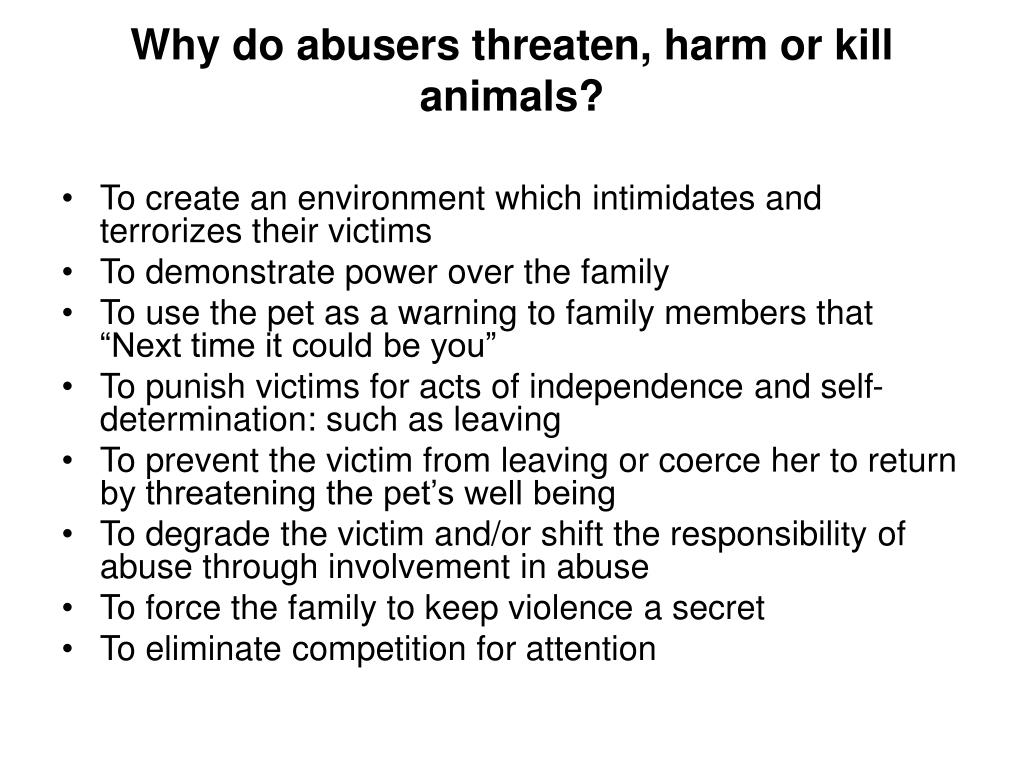In exploring the multifaceted nature of abuse, it is imperative to consider the victims that often go unnoticed or unacknowledged. What connects human abusers to their most vulnerable targets, including animals? The phenomenon of animal cruelty within abusive households raises critical questions about the psychology of the perpetrator and the dynamics of power and control. This article delves into the alarming nexus between narcissistic traits in humans and the propensity to harm animals, thereby creating a ripple effect of suffering.
To comprehend the rationale behind such cruelty, it is essential to discern the characteristics of a narcissist. Narcissism is marked by an inflated self-image, a profound need for admiration, and a distinct lack of empathy. This absence of empathy frequently leads to the belittlement or dehumanization of others, including animals. In the eyes of a narcissist, animals can be viewed merely as objects, tools for manipulation or expressions of dominance, rather than sentient beings deserving of compassion.
The question emerges: why do these individuals find it necessary to exert their power over defenseless creatures? For many narcissistic abusers, the act of inflicting pain on animals serves to vicariously reinforce their own superiority and control. Making an animal suffer can be a twisted manifestation of one’s inadequacies, a grotesque performance intended to garner results that strengthen their delicate ego. The paradox lies in the fact that the very act intended to assert dominance often reveals a profound internal weakness.
Victims of narcissistic abuse, including human partners and children, may observe a disturbing pattern when animals are involved. In situations where an abuser feels challenged or threatened by another human, their fury may be redirected towards animals as a form of punishment or manipulation. Here, we witness another perplexing question: do abusers harm animals to send a message to their human victims? The logic here is disconcertingly simple; by inflicting cruelty on a pet, the abuser instills fear and establishes a chilling reminder of their capacity for violence. It’s not uncommon for the human victims to worry that if they oppose the abuser, they too may endure similar treatment.
This dynamic is particularly visible in domestic settings, where pets are caught in the crossfire of an abuser’s need to maintain control. The correlation between animal abuse and domestic violence is well-documented; studies have shown that homes characterized by violence towards women often harbor neglect or outright cruelty to animals. Here lies a potent challenge: how can those who wish to help both animal and human victims intervene effectively? Recognizing the signs of such abuse could be the first step towards breaking the cycle. Community programs and shelters dedicated to victims of domestic violence can provide crucial resources for both humans and their pets, yet these initiatives require more visibility and support.
Moreover, the implications of this interplay extend beyond individual cases; they resonate through societal attitudes towards animals and abuse. When animal cruelty is trivialized or ignored, it perpetuates a culture that devalues empathy and kindness towards all living beings. As advocates for animal rights and welfare, it is vital to engage in awareness campaigns that underline the significance of addressing animal cruelty in discussions of human abuse. When society confronts these issues collectively, the dual narratives of animal and human suffering can be addressed more holistically.
Despite the darkness surrounding such topics, there is a glimmer of hope in the form of legal protections, educational programs, and community outreach initiatives aimed at raising awareness. Legislative frameworks that impose stringent penalties for animal cruelty can serve as deterrents while underscoring the connection between animal and human rights. Criminal justice systems are increasingly recognizing the significance of animal cruelty in the broader context of abusive behavior, thus promoting a more inclusive approach to violence prevention.
On a psychological level, understanding the perverse motivations of abusers opens avenues for intervention. Therapeutic approaches aimed at addressing narcissistic tendencies are crucial, as they may indirectly prevent instances of animal cruelty. Training that fosters empathy, compassion, and emotional intelligence can yield transformative outcomes for both abusers and their victims, human or animal alike. It raises a critical issue: how do we effectively educate individuals exhibiting narcissistic traits to respect and cherish rather than harm?
The complexity of abuse elucidates an urgent need for cross-disciplinary collaboration. Animal advocates, mental health professionals, and child protection services must unite to unravel the intricate web of abuse. We ask: how can we build an infrastructure that promotes the well-being of both human and animal victims? By creating supportive environments and fostering open communication, these professionals can better address the root causes of abusive behavior.
In conclusion, the alarming correlation between narcissism, human abuse, and animal cruelty invites a profound reevaluation of our societal norms. By acknowledging the plight of animals in abusive settings, we can better support their human counterparts and seek resolution to these cycles of violence. Whether through heightened awareness, legislative action, or community support, every effort to combat animal cruelty is a step towards fostering empathy and compassion in our society. As we confront these challenges, let us remain vigilant in our endeavors to protect all victims of abuse, advocating for a world that values kindness towards every creature.










